Our challenge to popularize
small wind turbines
We come into contact with the power of the wind in many different situations. Wind that blows through the park in the summer afternoon, wind that blows over the lodge in winter, the unsettling air before a typhoon… wind is a large-scale movement of the atmosphere, with a vast amount of energy.
Can we utilize this energy for the benefit of our lives?
This is what inspired us to start our new challenge.
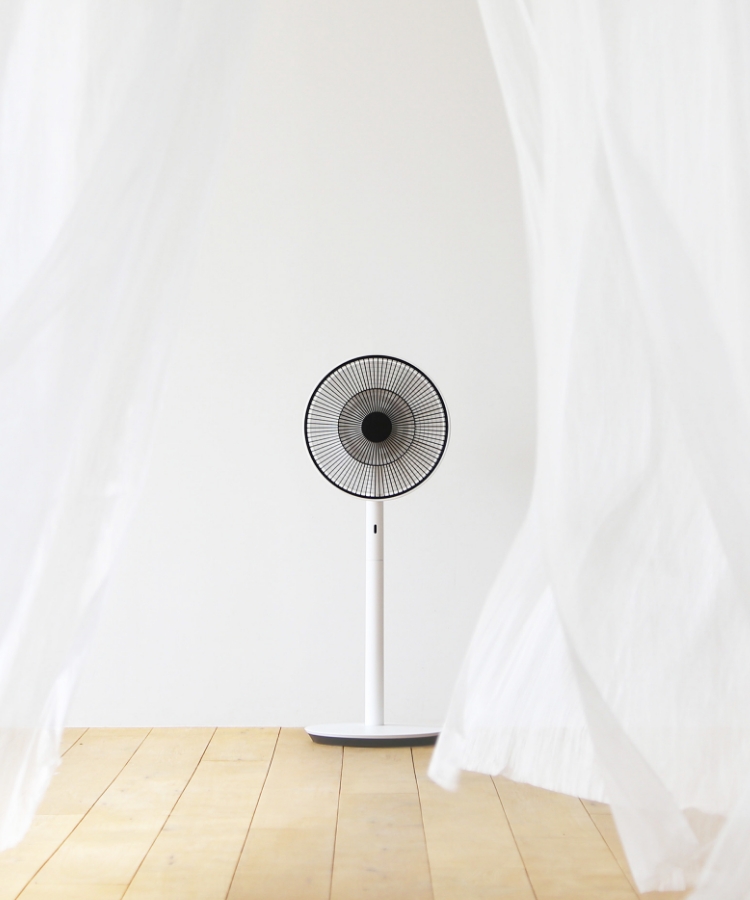
Consuming power and generating power
In 2010, BALMUDA launched GreenFan, a DC motor electric fan. GreenFan reproduces the wind of the natural world with its unique blades, with an energy-saving performance of approx. 10% of conventional fans. GreenFan was created to deliver comfortability during summer with minimum power consumption.
Since then, BALMUDA has produced a variety of household appliances, and now we are expanding the scope of our challenge into the area of not only “consuming” electricity, but also “generating” it.
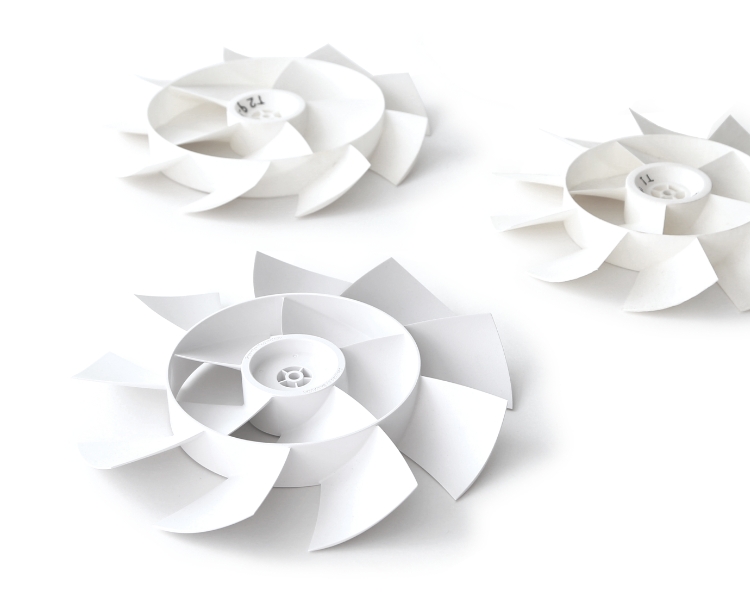
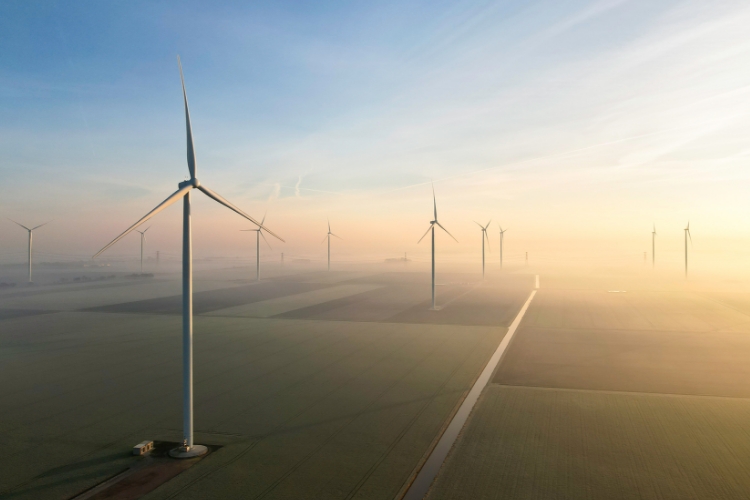
Power generators of today
Wind turbines have become larger and faster in the pursuit of efficiency. Some of them exceed 200 m in diameter and rotate at speeds of over 300 km/h at the blade tips. They have become more selective about where they can be installed.
Wind blows in various areas, over hills, between buildings, and small fishing harbors. To generate wind power near areas where we consume power, small wind turbines are needed, but noise and energy conversion inefficiency are the issues.
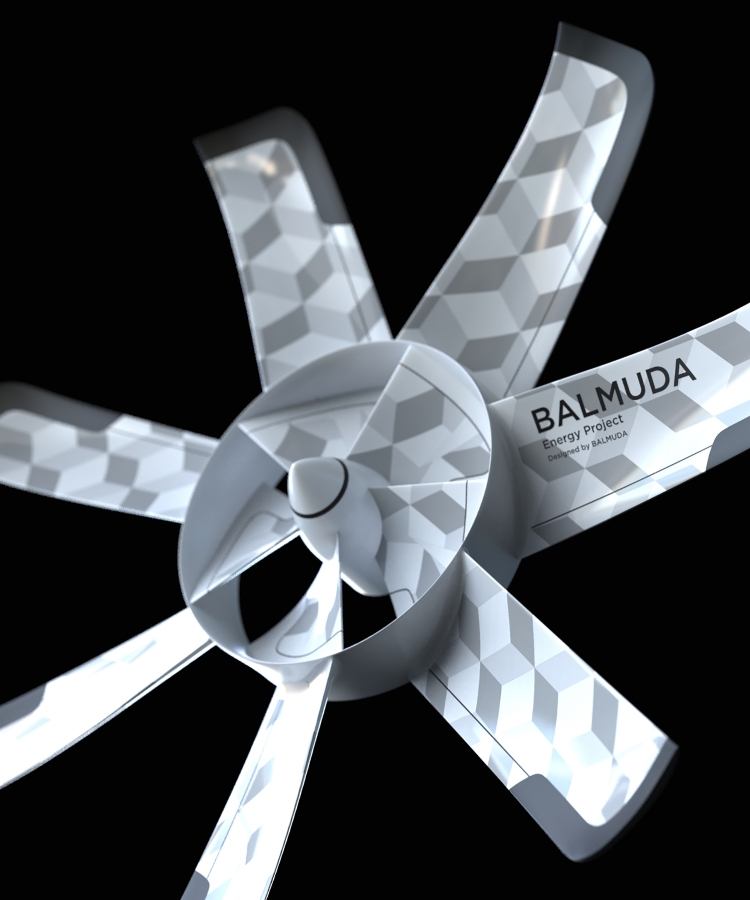
The unique BALMUDA turbine
BALMUDA’s patent-pending Modern Multi-Blade Turbine features a unique double blade structure that originated with GreenFan. By arranging two types of blades on the inside and outside, each produces its own rotational force, achieving characteristics never seen before.
Laboratory experiments have confirmed low rotational speed and quietness, and excellent energy conversion efficiency while maintaining its small size (less than 1 meter in diameter).
Modern Multi-Blade Turbine
In general, the higher the rotational speed of a turbine, the higher its energy conversion efficiency. Therefore propeller turbines with thin blades are currently the mainstream. BALMUDA is taking on the challenge of modern multi-blade turbines. It has the potential to achieve high energy conversion efficiency while maintaining a low rotational speed and quietness.
Relationship between power coefficient and turbine tip speed ratio
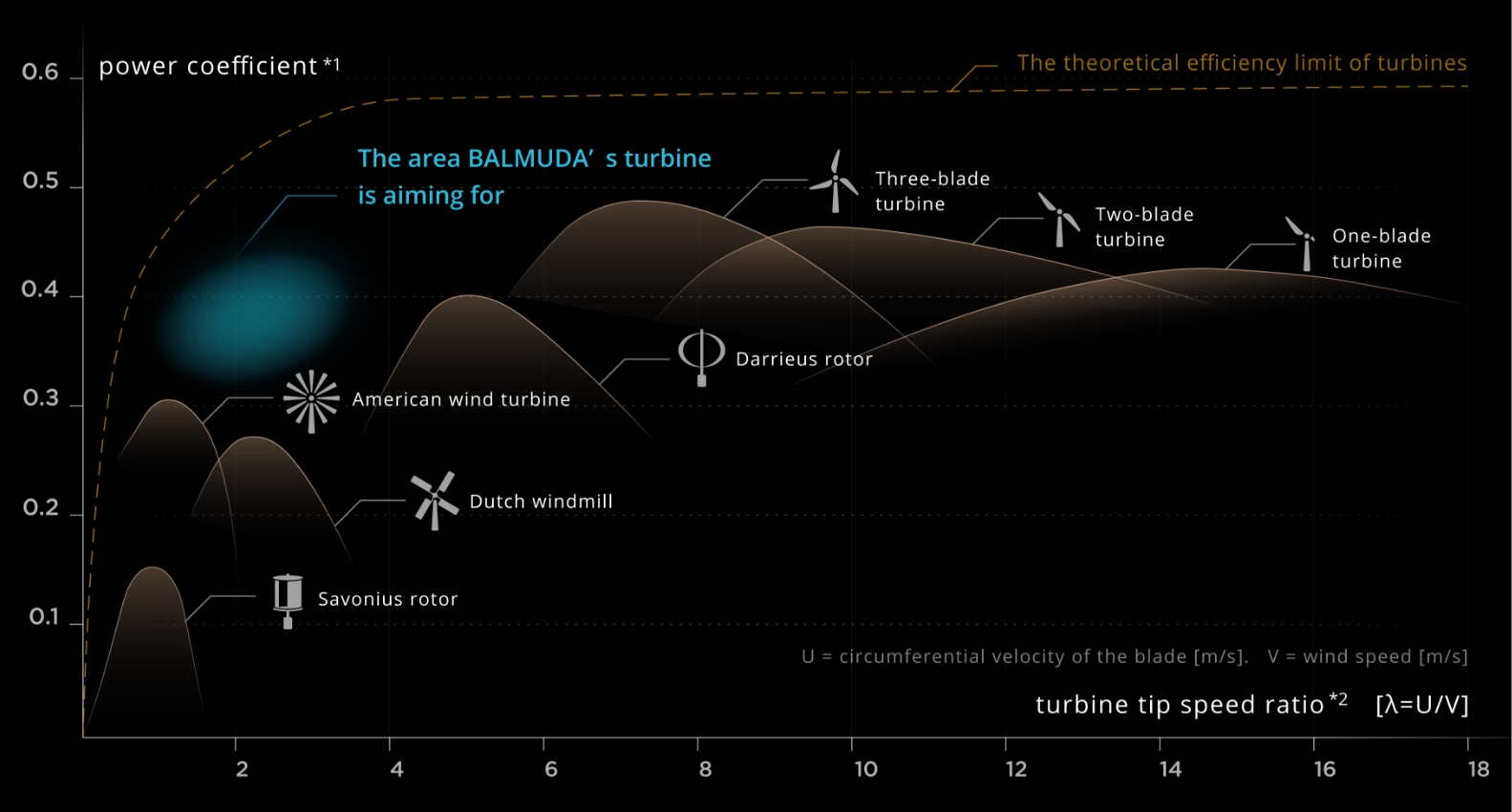
Scroll sideways to see full graph
*1 The proportion of wind energy that a wind turbine can extract as mechanical or electrical energy.
*2 The value representing how many times faster the tip of the blade is moving compared to the wind speed.
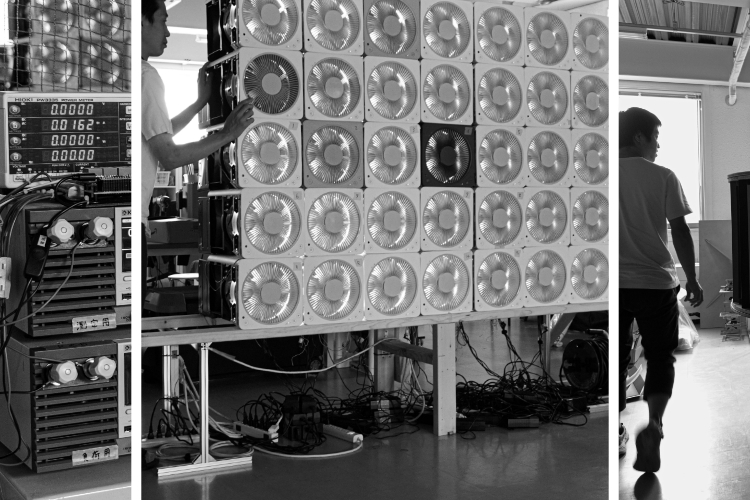
On to field tests
Research and development of BALMUDA’s power generating turbine began several years ago. Performance of the turbine has been tested in-house and in wind tunnels at research institutes. We now need to conduct field tests in actual environments where the technology will actually be used. Preparations are underway to begin field test in the fall of 2023.

The power of wind
If a small, efficient, quiet and safe wind turbine can be realized, and it can capture the wind blowing in various places where large wind turbines can not, it will surely become a useful tool in our lives.
BALMUDA will continue to take on the challenge of maximizing the potential of using natural energy.


